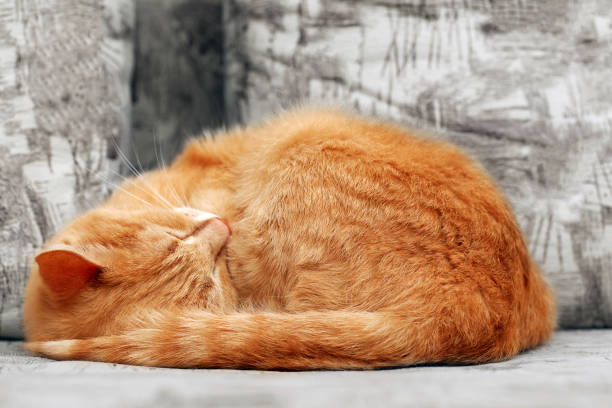Introduction
Cats, known for their enigmatic behaviors, often leave us wondering about their preferences when it comes to physical interaction. One particular question that intrigues many cat owners is whether do cats like their tails touched. In this article, we’ll explore the nuances of feline behavior and delve into the factors that influence a cat’s response to tail touches.

Individual Variability
Just like humans, cats have distinct personalities and preferences. While some cats may tolerate or even enjoy having their tails touched, others may find it uncomfortable or intrusive. Understanding the individual variability in cat behavior is crucial when gauging their response to tail touches.
Sensitivity of the Tail
The question of whether do cats like their tails touched delves into the feline anatomy and their inherent sensitivity. Cats are known for their expressive tails, and while some may tolerate or even enjoy gentle touches, many are sensitive about this area. The tail is an extension of a cat’s spine, and it houses numerous nerve endings. As such, touching their tails can be akin to touching a sensitive part of their body. Some cats may interpret tail touching as invasive or threatening, leading to discomfort or even anxiety. It’s essential to observe individual preferences, as some cats may appreciate a soft touch at the base of their tail, while others may prefer to keep this area undisturbed. Understanding a cat’s body language and respecting their boundaries regarding tail interactions contribute to building a trusting and positive relationship between feline companions and their human caregivers.

Trust and Bonding
The level of trust and bonding between a cat and its owner significantly influences their response to tail touches. Cats that feel secure and connected with their human companions may be more accepting of gentle tail touches as a form of affection. Building trust through positive interactions can contribute to a cat’s comfort with tail handling.
Early Socialization
The preference of do cats like their tails touched often traces back to their early socialization experiences. Kittens that receive gentle handling, including touches around the tail area, during their early weeks of life are more likely to grow up comfortable with human touch, including their tails. Cats that have positive interactions during this critical period tend to develop a trusting demeanor, making them more receptive to various forms of physical contact as adults. However, each cat is an individual with unique preferences, and some may naturally be more sensitive about their tails. Observing a cat’s body language and respecting their boundaries during interactions contribute to fostering a positive and trusting relationship. Patience and understanding play key roles in allowing cats to feel at ease with tail touches, particularly if they were not exposed to positive experiences during their early socialization period.

Observation of Cues
The question of whether do cats like their tails touched revolves around keen observation of feline cues. Cats are highly communicative through body language, and tail movements often convey their mood and comfort level. While some cats may tolerate or even enjoy tail touches, it’s crucial to watch for signals indicating their preference. A relaxed cat with a gently swaying tail might be more amenable to touches, while a twitching or thumping tail could signify irritation or discomfort. It’s essential to approach tail touching with sensitivity, allowing the cat to dictate the level of interaction. Respect for their cues and preferences fosters a trusting relationship, ensuring that any contact with their tails aligns with their comfort and sense of security. Each cat is unique, and by paying attention to their cues, we can better understand and respond to their individual needs and preferences regarding tail touches.
Conclusion
In conclusion, whether do cats like their tails touched depends on various factors, including individual variability, the sensitivity of the tail, the level of trust and bonding, early socialization experiences, and careful observation of feline cues. Respecting a cat’s preferences and recognizing their comfort zones contribute to a positive and trusting relationship between cats and their owners.
FAQS
Q1. How can I tell if my cat likes having its tail touched?
A: Identifying a cat’s comfort with tail touches involves observing positive signs such as slow blinking, purring, and a relaxed body posture. These cues indicate acceptance and contentment with gentle tail interactions.
Q2. What should I do if my cat doesn’t like having its tail touched?
A: Respecting your cat’s boundaries is essential. If your cat displays signs of discomfort or aggression when its tail is touched, it’s advisable to avoid such interactions. Instead, focus on alternative forms of affection that your cat enjoys to maintain a positive relationship.
Q3. Can I train my cat to be more comfortable with tail touches?
A: Yes, gradual desensitization through positive reinforcement can help. Begin by offering treats or gentle strokes in other areas before attempting tail touches. Patience and creating positive associations during these interactions contribute to your cat becoming more comfortable over time.
Q4. Are there specific breeds that are more tolerant of tail touches?
A: Tolerance for tail touches varies among individual cats rather than specific breeds. It’s crucial to consider the unique personality and preferences of each cat, as their response to tail touches is influenced more by individual temperament than breed characteristics.
Q5. Why do some cats twitch their tails when touched?
A: Tail twitching in cats can signal various emotions, including excitement, arousal, or irritation. Understanding the context of the interaction and accompanying body language is crucial in interpreting a cat’s tail movements. Observing these cues provides insights into the cat’s emotional state during tail touches.